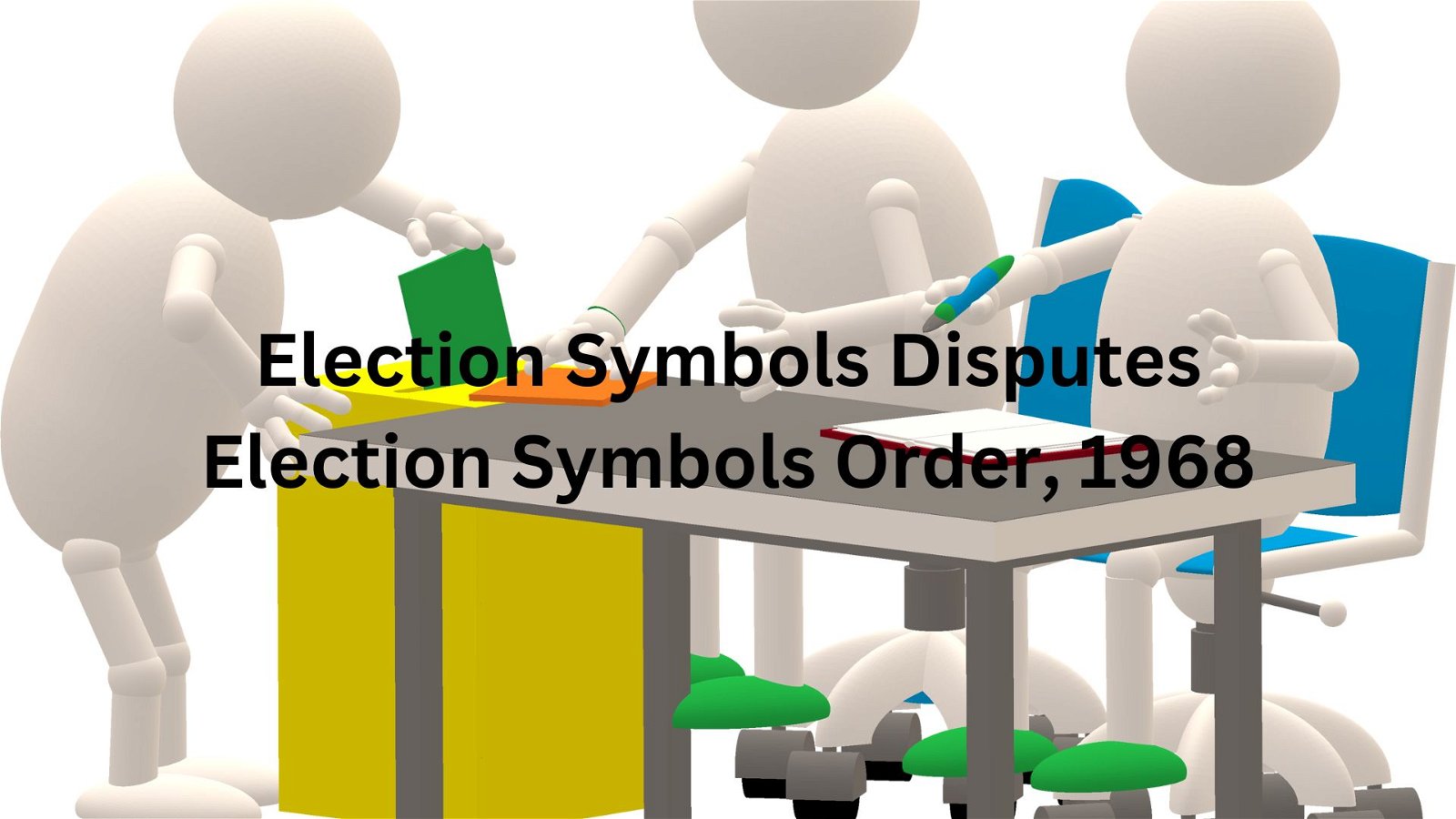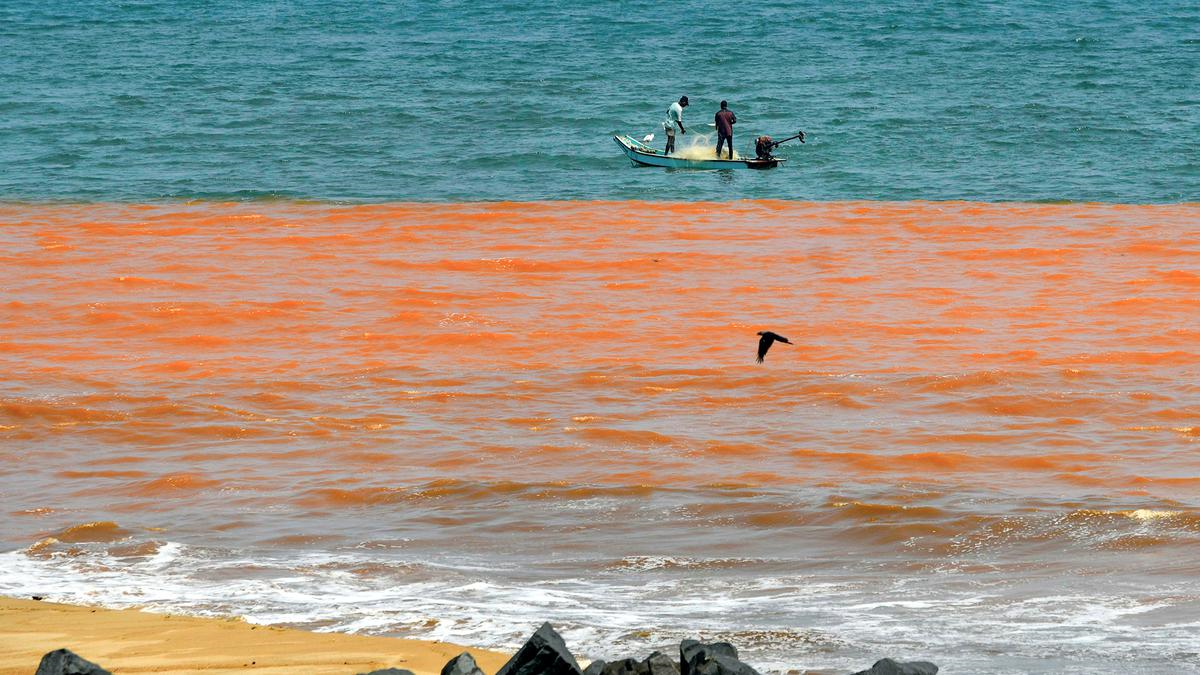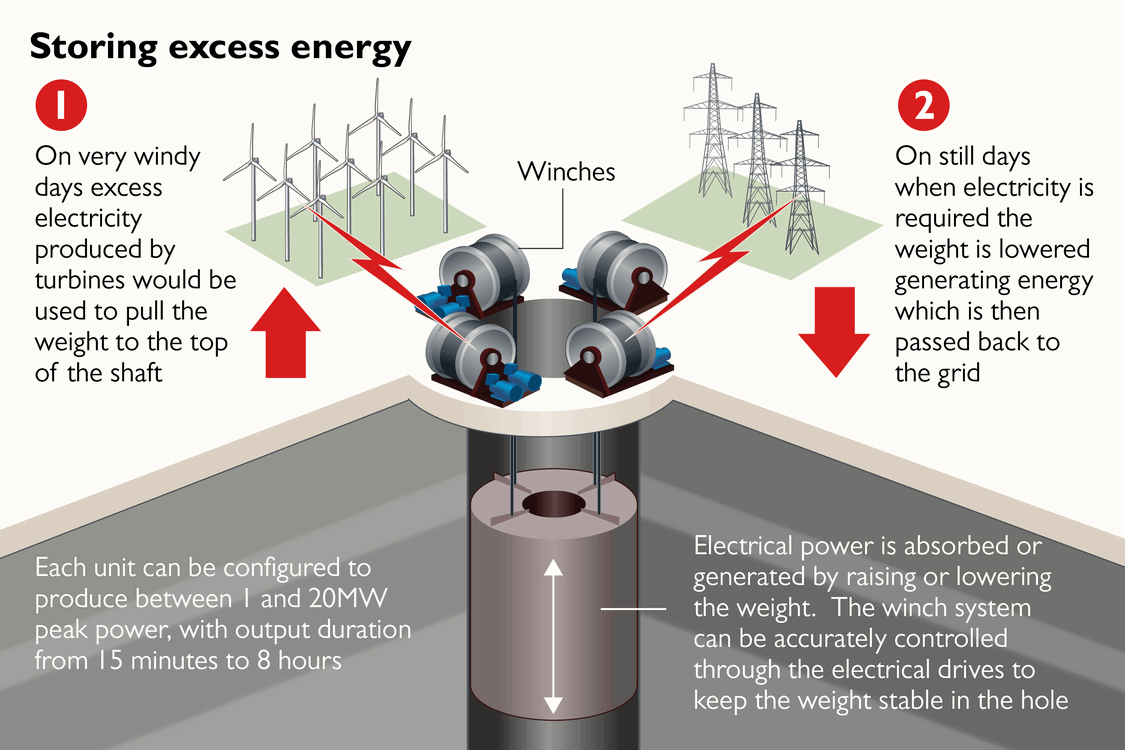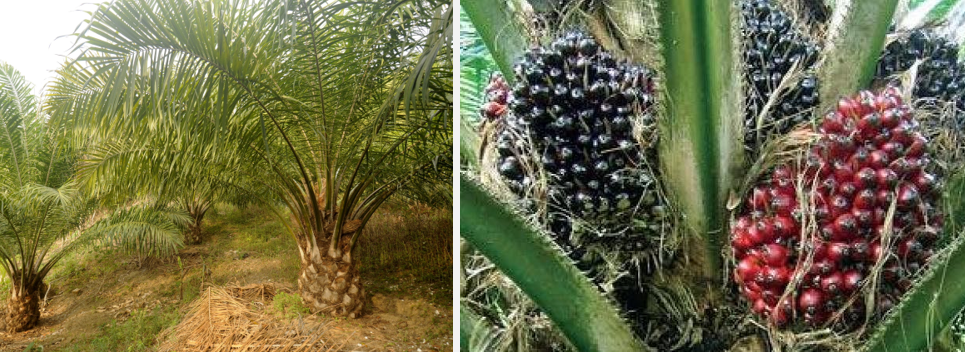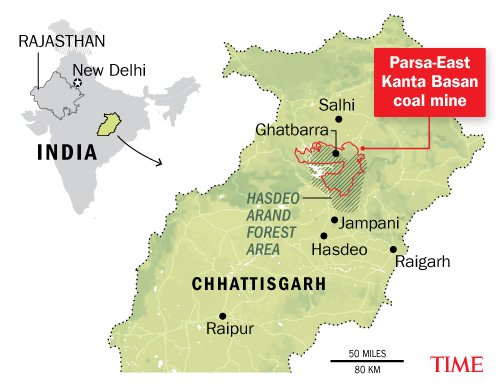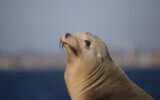
Current Affairs for UPSC Civil Services Exam – March 23, 2024
Subscribers of "Current Affairs" course can Download Daily Current Affairs in PDF/DOC
Subscribe to Never Miss an Important Update! Assured Discounts on New Products!
Must Join PMF IAS Telegram Channel & PMF IAS History Telegram Channel
{GS1 – Geo – PG – Geomorphology} Gibraltar Subduction Zone
- Context (TOI | WION): According to a study published, the Gibraltar arc has been quietly creeping westward and might “invade” the Atlantic, leading to the gradual closure of the ocean basin.
- There are two other subduction zones on the other side of the Atlantic—the Lesser Antilles, in the Caribbean, and the Scotia Arc, near Antarctica. However, these subduction zones invaded the Atlantic several million years ago.

- The Gibraltar Arc is currently located beneath the Gibraltar Strait, between Spain and Morocco.
- Gibraltar Strait, a 10-mile gap separating Europe and Africa, marks the meeting point of the Eurasian Plate and the African Plate.
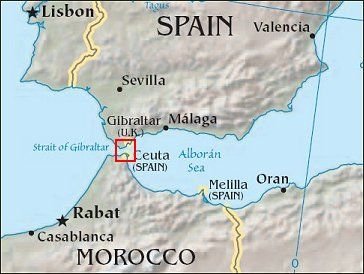
- The Gibraltar arc, which began its westward journey around 30 million years ago, has appeared stalled in recent history, prompting speculation about its activity.
- However, the study suggested that the Gibraltar arc is merely in a period of dormancy.
- Over the next 20 million years, the arc will gradually push its way westwards through the narrow Gibraltar Strait and into the Atlantic in a process termed “subduction invasion” forming a new Atlantic Subduction System akin to the infamous “Ring of Fire” encircling the Pacific Ocean.
- Such a transformation would involve the recycling of oceanic crust into the mantle through subduction, gradually altering the landscape of the Atlantic.

To learn more on the Process of Subduction, refer to >Continent-Continent Convergence, Ocean-Ocean Convergence, Continent-Ocean Convergence.
{GS1 – MIH – Personalities} Erode Venkatappa Ramasamy ‘Periyar’
- Context (IE): Awarded vocalist T M Krishna is facing opposition from many musicians due to his support of Periyar’s ideology.

- Periyar was born in 1879 in Erode (Tamil Nadu).
- He started as a Congress worker who had differences with Gandhiji over the question of separate dining for Brahmin and non-Brahmin students.
- Vaikom Satyagraha of 1924: He organised a mass movement to demand the right to use a public path in front of the Vaikom temple for all castes. Referred to as Vaikom Veerar (Hero of Vaikom).
- He resigned from the Congress party in 1925 and joined the Justice Party.
- Periyar supported the British, hoping that the British would, in turn, support his demand for Dravidstan, a separate country for “Dravidians.”
- Organised Self–Respect Movement, which opposed the dominance of Brahmins in social life, especially the bureaucracy.
- Periyar launched the Dravidar Kazhagam (DK) party in the 1940s, which espoused an independent Dravida Nadu comprising Tamil, Malayalam, Telugu, and Kannada speakers.
- Social reforms: His reform agenda focused on social, cultural, and gender inequalities and questioned matters of faith, gender, and tradition.
- His extreme anti-Brahmin stand brought him into controversy.
- Periyar died in 1973 at the age of 94. Over the years, He has become revered as Thanthai Periyar (meaning Elder), the father of the Dravidian Movement.
- His birth anniversary is celebrated as ‘Social Justice Day’ in Tamil Nadu.
{GS2 – IR – Russia} Russian Presidential Elections
- Context (IE I IESS): Russian President Vladimir Putin, 71, won the recent Presidential elections by securing 87.97 per cent of the votes.
- With a six-year term set to follow, he will become Russia’s or Soviet’s longest-serving leader since Joseph Stalin in more than 200 years.
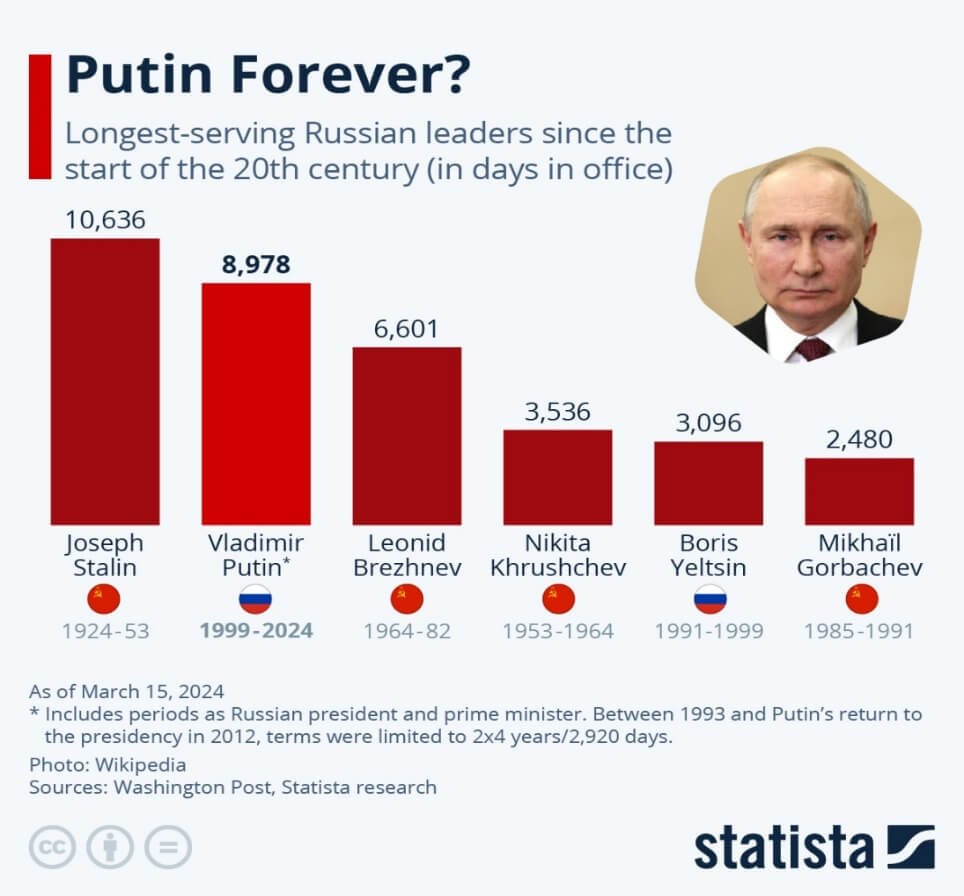
- Prior to the 2020 referendum, the Russian Constitution barred more than two consecutive presidential terms.
- According to the referendum, the current President of Russia can stay in power for two more six-year terms (until 2036) after his term expires in 2024.
- Putin has held continuous positions as president or prime minister since 1999:
- Prime minister from 1999 to 2000 and from 2008 to 2012,
- President from 2000 to 2008 and from 2012 till now.
Presidential Eligibility
- Term Limits: The 2020 amendments established a strict limit of two presidential terms in total but also specified that terms served before the amendment would not count towards this limit.
- This adjustment effectively allows for the possibility of President Putin serving until 2036 if he continues to be re-elected.
- Age Requirement: Candidates must be at least 35 years old.
- Residency Requirement: Candidates are required to have been residents of Russia for at least 25 years.
- Citizenship and Residence Permit: Candidates cannot hold foreign citizenship or a residence permit in a foreign country at the time of the election or at any time before.
- After the 2020 amendments, the limit was increased from 10 years to 25 years, and a clause related to not having foreign citizenship or a foreign residence permit was introduced.
Election
- The presidential election is mainly regulated by the Presidential Election Law (PEL) and the Basic Guarantees of Electoral Rights (BGL).
- The Federation Council calls the presidential elections.
- If it does not call a presidential election that is due, the Central Election Commission will call it.
- Election Day is the second Sunday of the month, and the presidential electoral constituency is the territory of the Russian Federation as a whole.
- The president is elected by direct popular vote in a two-round majoritarian contest:
- If no candidate receives over 50% of the vote in the first round, the two candidates with the most votes advance to a run-off.
- The second (run-off) round is held exactly three weeks after the first. The second round shall appoint with the written consent of the candidate to participate in the second round.
Nomination of candidates
- Candidates can be nominated by a political party or run as independents.
- Each faction in the State Duma, the lower house of the Russian parliament, has the right to nominate a candidate for the presidential elections.
- A political party can only nominate one candidate. Also, the same candidate can only be nominated by one political party.
- Political parties may not nominate candidates at the congress but may decide to support a candidate nominated by another party or an independent candidate.
Vacancy or disability
- Vacancies in the office of president may arise under several possible circumstances: death, resignation and removal from office.
- In all cases when the president is unable to perform their duties, their powers are temporarily transferred to the prime minister until the new president takes office.
Powers and duties
Guarantor of the Constitution
- The President is the guarantor of the Constitution and the entire system of constitutional law.
- He ensures that the constitutions, laws and regulations of the constituent territories are in full compliance with the country’s constitution and federal laws.
Nominations
- The President nominates candidates for official state positions, who must ultimately be appointed based on parliamentary vote.
- The President submits nominations to the Federation Council, for appointment as the judges of the Constitutional Court, the SC, the Supreme Arbitration Court, and the prosecutor general of Russia.
- The President submits nominations to the State Duma, for appointment as the chairperson of the Central Bank.
Legislation
- Under the procedure stipulated by the Constitution, the president exercises their right to submit draft legislation, as well as the right to sign bills into law or to veto them.
- The president has the right to suspend laws and regulations issued by executive bodies of Russia’s constituent territories if such rules and regulations contravene-
- The Constitution, federal laws or international obligations of the Russian Federation, or
- Violate human and civil rights and liberties.
Why do Russian elections Matter?
- The Russian elections are often described by Western governments as being undemocratic, with Putin’s regime accused of repressing opposition voices.
- Since Putin first became Prime Minister in 1999, several of his opponents have been barred from contesting polls.
{GS2 – Social Sector – Health – Diseases} Hepatitis B vaccine
- Context (DTE): A study reveals a concerning lack of public knowledge and awareness about Hepatitis B and its vaccines in India.
- Only 25% of respondents demonstrated adequate knowledge about Hepatitis B, including its transmission, its effects on the liver, and the importance of vaccination.
Hepatitis
- Hepatitis is an inflammation of the liver.
- The condition can be self-limiting or can progress to chronic hepatitis, which can lead to progressive scarring of the liver (cirrhosis) or liver cancer.
Hepatitis B Virus (HBV)
- Transmission
- Through exposure to infective blood, semen, and other body fluids.
- From infected mothers to infants at the time of birth
- Through contaminated injections during medical procedures, & through injection drug use.
- Prevention: Safe and effective vaccines are available to prevent HBV.
Hepatitis B (HepB) Vaccine
- It protects from Hepatitis B virus infection.
- It is given at birth or as early as possible, within 24 hours.
- Subsequently, three doses are given at 6, 10 and 14 weeks in combination with DPT and Haemophilus influenzae type b (Hib) as a pentavalent vaccine.
Pentavalent Vaccine
|
Learn more about different types of Hepatitis >PMFIAS CA January 23, 2024.
{GS3 – Envi – Conservation} Vantara
- Context (NM): Vantara has been in the news, and some concerns are being raised.
- Vantara is run by Radhe Krishna Temple Elephant Welfare Trust, Greens Zoological and Reliance.
- Location: Reliance refinery complex, Jamnagar (Gujarat).
- It is a global initiative to ‘rescue’ and shelter ‘traumatised’ wild fauna, especially elephants.
- It is like a massive open zoo with 200 elephants, over 300 large cats, including lions, tigers, and jaguars, and hundreds of herbivores.
- Vantara, which means star of the forest, is spread across 3000 acres and is also home to several rare and endangered species, including the Spix’s macaws, of which only 200 remain in the world.
Spix’s macaw (little blue macaw)
|
Concerns
- Alleged illegal sourcing of elephants, aided by the recent dilution of wildlife laws after the Wildlife Protection Act 2022 amendment.
- The allegation that three protections against the trafficking of wild elephants – mandated proof of heredity through DNA profiling, microchipping, and the ban on wild captures now stand diluted.
- Greens Zoological has argued that all transfers up to 1 April 2023 have been scrutinised and upheld by a Supreme Court High Powered Committee.
{GS3 – Envi – Issues} Netravati Riverfront Promenade Project
- Context (DTE): The National Green Tribunal principal bench in New Delhi has initiated action on the Netravati Riverfront Promenade project.
- It will be inspected by a joint committee consisting of representatives from the Central Pollution Control Board, Ministry of Environment and Forest, and National Centre for Coastal Research.
About the Project

- It is being carried out by Mangaluru Smart City Ltd (MSCL).
- Promenade development will include setting up a biodiversity park, a bird-watching area, a pathway, and a cycle track from the bridge to the Bolar Sea face.
- It will also include construction of a hanging bridge across the Phalguni (or Gurupura river) from Sulthan Bathery to Tannirbavi, refurbishment of water jetties at Tannirbavi and Sulthan Bathery, and creating infrastructure for water sports activities.
- Other additions will be a ghat, outdoor gym, cycle stand, pet park, etc.
- It intends to connect the city to the river and the sea through proposed landmarks and nodes.
Netravati River
|
Issues raised
- Environmental concerns: The destruction of mangroves, heavy earthwork at estuarine edges, and construction of artificial embankments, among others, raise concerns.
- Alleged violations of the conditional CRZ clearance: MSCL allegedly violated clearances given by the Karnataka Coastal Zone Management Authority.
- High economic cost: The exorbitant cost of Rs 70 crore for just 2.1 km raises concerns.
- No environmental impact assessment: Despite the estuary being 1km away, EIA is not carried out.
For more details, visit > CRZ regulation
{GS3 – Envi – Pollution} Arsenic Contamination in Rice
- Context (DTE): A new study underlines the risk of using water contaminated with arsenic to cook rice.
Arsenic in Rice
- Rice acquires essential micronutrients from soil and groundwater through transporters.
- However, during this process, other non-essential elements like arsenic are absorbed by the plant with the help of several phosphate transporter genes and proteins.
- Form and concentration of arsenic depends on several factors:
- Whether the water is oxygenated (for example, arsenites predominate under reducing conditions such as those found in deep well waters);
- The degree of biological activity (which is associated with the conversion of inorganic arsenic to methylated arsenic acids);
- The type of water source (for example, open-ocean seawater, surface freshwater, or groundwater);
- The proximity of the water source to arsenic-rich geological formations and other anthropogenic sources.
- Brown rice contains higher concentrations of arsenic than white rice.
- Most of the inorganic arsenic in rice is concentrated in the bran layers that contain 10 to 20 times higher concentrations than whole grain.
- Therefore, the risk from consumption of products made from rice bran such as rice drinks is much higher than that from raw, but polished (white) rice.
- According to the recent study, conducted by the University of Sheffield’s Institute for Sustainable Food and the Department of Geography (United Kingdom), some countries still follow the outdated WHO standard of 50 parts per billion as a safe threshold for arsenic in drinking water.
- Rice contains more arsenic in comparison to other cereals. It contains inorganic arsenic (iAs) — a Group 1 carcinogen according to the International Agency for Research on Cancer, a part of WHO.
- This poses a significant health concern when rice is cooked with water that has unhealthy amounts of arsenic.
- Prolonged exposure can lead to even diabetes and cardiovascular diseases.
- White and parboiled rice absorbs more arsenic than brown rice, demonstrating that the population in Western countries and Asia is more at risk of suffering health consequences.
Arsenic
- Arsenic is an element with the chemical symbol As.
- It is also a known metalloid and classified as a Group-A carcinogen.
- Chronic arsenic poisoning causes melanosis and keratosis (dark spots on the upper chest, back and arms are known as melanosis; the next stage is keratosis, in which palms become hard), leading to loss of appetite and skin cancer, long-term exposure to arsenic may also cause cancers of the bladder and lungs.
- The International Agency for Research on Cancer (IARC) has classified arsenic and arsenic compounds as carcinogenic to humans, also when present in drinking water.
{GS3 – Envi – Species} Long-billed Vultures
- Context (TH): The Nilgiris region hosts nesting sites of critically endangered long-billed vultures, but human interventions, particularly tourism activities, threaten these sites.

- The Indian Vulture, also known as the long-billed vulture (Gyps indicus), is a bird of prey native to the Indian subcontinent.
- Physical Characteristics:
- Large, heavy-bodied bird with a bald head and long, broad wings.
- Prominent, hooked beak adapted for tearing flesh and scavenging.
- Feathers are dark brown to black, with a whitish neck ruff.
- Adults have long, slender bills, while juveniles have shorter bills that gradually lengthen with age
- Distribution: Historically widespread across the Indian subcontinent, including India, Nepal, Pakistan, and Bangladesh.
- Habitat: Grasslands, open forests, agricultural areas, and urban areas with access to carrion.
- Diet: Scavenger, feeding primarily on carrion, particularly large mammal carcasses
- Threats: use of the veterinary drug diclofenac, which is toxic to vultures and causes kidney failure, poisoning from consuming carcasses contaminated with pesticides and other toxic substances.
- Conservation status: IUCN Status: Critically Endangered
{GS3 – Envi – Species} New Species in Kaziranga National Park
- Context (Scroll): Kaziranga National Park recently identified two new species: the Binturong and small-clawed otter.
- This elevated the count of mammal species in the park to 37.
Binturong
- The Binturong, also known as the bearcat, is a viverrid native to South and Southeast Asia.
- Physical Characteristics:
- Long and heavy body with short, stout legs
- A thick coat of coarse black hair
- Prehensile tail used for balance and communication
- Large eyes and short, pointed muzzle covered with bristly hairs
- Distribution: Found across South and Southeast Asia, including India, Nepal, Bangladesh, Myanmar, Thailand, Malaysia, Indonesia, and the Philippines
- It inhabits tall forests, both primary and secondary, with good tree cover.
- Diet: Omnivorous, feeding on small mammals, birds, fish, insects, fruits, and occasionally preying on rodents.
- Threats: Habitat loss and degradation due to logging, conversion of forests to non-forest land uses, and habitat fragmentation.
- Conservation status: IUCN Status: Vulnerable | CITES: Appendix III | WPA: Schedule I
|
Small-Clawed Otter

- The Asian small-clawed otter, also known as the oriental small-clawed otter or the small-clawed otter, is an otter species native to South and Southeast Asia.
- Physical Characteristics:
- Slender body with short legs and a long, muscular tail.
- Small, rounded ears and short, blunt snout.
- Webbed feet with reduced claws, giving them their name.
- Thick, water-repellent fur that ranges in colour from brown to grey.
- Distribution: Found in freshwater habitats across South and Southeast Asia, including India, Nepal, Bangladesh, Myanmar, Thailand, Malaysia, Indonesia, and the Philippines.
- It inhabits rivers, streams, marshes, and mangrove swamps with dense vegetation for cover and hunting.
- Diet: Carnivorous, feeding primarily on fish, crustaceans, molluscs, and occasionally small mammals and birds.
- Threats: Hunting and poaching for their fur, meat, and use in traditional medicine, human-wildlife conflict, including accidental entanglement in fishing gear and conflicts with aquaculture operations.
- Conservation status: IUCN Status: Vulnerable | CITES: Appendix I | WPA: Schedule I
{GS3 – S&T – Defence} Reusable Launch Vehicle ‘Pushpak’
- Context (ET | NDTV | TH): ISRO has successfully carried out the landing mission of ‘Pushpak’ Reusable Landing Vehicle Landing Experiment (RLV LEX) 02 from the Aeronautical Test Range (ATR) in Challakere near Karnataka’s Chitradurga.
- The RLV LEX 02 landing experiment is the second of the series of experiments conducted by the space agency under the Reusable Launch Vehicle Technology Demonstrator (RLV-TD) programme.
- RLV-LEX-02 demonstrated the autonomous landing capability of RLV off-nominal initial conditions at the release from a Chinook helicopter.
- The winged body and all flight systems used in RLV-LEX-01 were reused in the RLV-LEX-02 mission.
‘Pushpak’
- Pushpak, dubbed the “swadeshi space shuttle” is India’s futuristic Reusable Launch Vehicle.
- The rocket’s name comes from the ‘Pushpak Viman’ of the Ramayana, which is known as the Vehicle of Kuber, Lord of Wealth.
- It is designed as an all-rocket, fully reusable single-stage-to-orbit (SSTO) vehicle, incorporating several major elements such as the X-33 advanced technology demonstrator, the X-34 testbed technology demonstrator and the upgraded DC-XA flight demonstrator.
- In it, the most expensive part, the upper stage, which houses all the expensive electronics, is made reusable by bringing it back safely back to Earth.
- Later, it could even do refuelling of in-orbit satellites or retrieving satellites from orbit for refurbishment.
- It also a step towards India’s aim of “minimising space debris” and sets the stage for establishing the Bhartiya Antariksh Station by 2035.
Reusable Launch Vehicle Technology Demonstrator (RLV-TD) Programme
- It aims at developing essential technologies for a fully reusable launch vehicle to enable low cost access to space.
- The configuration of RLV-TD is similar to that of an aircraft and combines the complexity of both launch vehicles and aircraft.
- The winged RLV-TD has been configured to act as a flying test bed to evaluate various technologies, namely, hypersonic flight, autonomous landing and powered cruise flight.
- In future, this vehicle will be scaled up to become the first stage of India’s reusable two stage orbital launch vehicle.
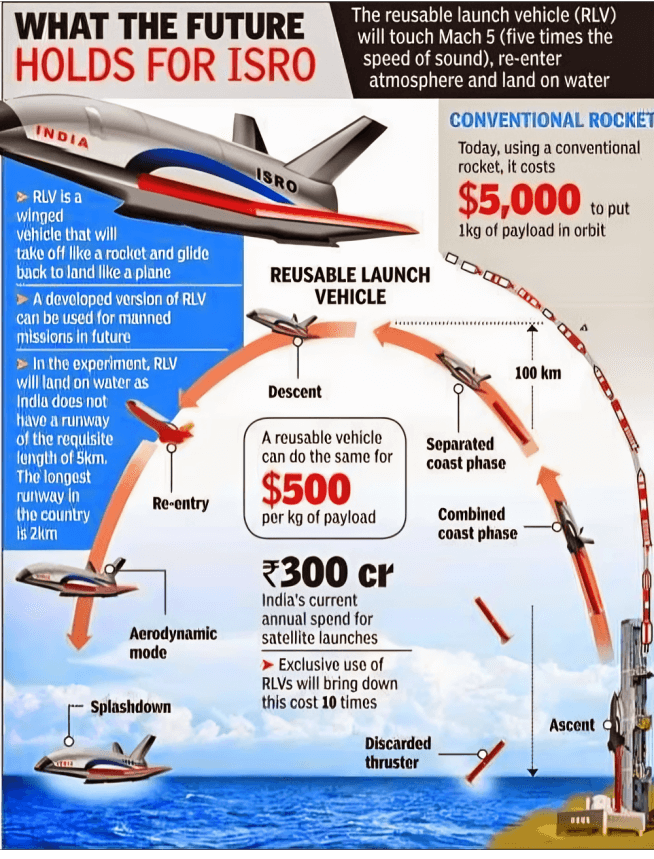
{Prelims – Awards} Order of the Druk Gyalpo
- Context (PIB): PM Shri Narendra Modi received the Order of the Druk Gyalpo from His Majesty the King of Bhutan at Thimphu.
- The Order of the Druk Gyalpo is the highest civilian decoration in Bhutan.
- It is awarded for lifetime achievement and holds precedence over all other orders, decorations, and medals in Bhutan.
- PM Modi is the first foreign leader to receive this prestigious award.
- The award recognizes PM Modi’s contributions to strengthening India-Bhutan friendship and his people-centric leadership.
{Prelims – In News} Operation Indravati | Haiti
- Context (IE): India launched ‘Operation Indravati’ to evacuate its citizens from the turmoil-stricken Haiti to the neighboring Dominican Republic.
- Haiti is currently in a state of emergency due to escalating violence attributed to gang warfare.
- UN reports that gangs control 80% of Haiti’s capital, with ongoing clashes in the remaining areas.
Haiti
- Second largest Caribbean Island, Haiti is situated 77 km southeast of Cuba.
- Capital: Port-au-Prince
- It is bordered to the east by the Dominican Republic, which covers the rest of Hispaniola, to the south and west by the Caribbean, and to the north by the Atlantic Ocean.
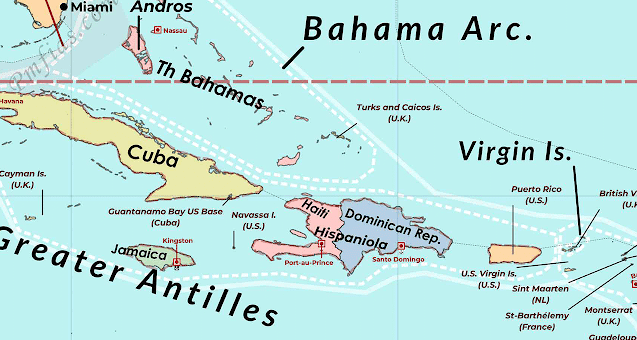
{Prelims – PIN World – Antarctica} Point Nemo
- Context (NDTV): Chris Brown, the British explorer, became the first person to lead an expedition to Point Nemo, recognized as the most remote location on Earth.
- Point Nemo, also known as the “oceanic pole of inaccessibility” is considered the remotest place on Earth, named after Jules Verne’s fictional submarine captain.
- Location: The nearest land is the Pitcairn Islands, situated 2,688 km away.
- The nearest humans are astronauts aboard the International Space Station, 408 kilometres above in low Earth orbit.
- While many sailors have navigated near Point Nemo, no specific expedition has reached the exact location since Canadian-Russian engineer Hrvoje Lukatela discovered it in 1992.




![PMF IAS Environment for UPSC 2022-23 [paperback] PMF IAS [Nov 30, 2021]…](https://pmfias.b-cdn.net/wp-content/uploads/2024/04/pmfiasenvironmentforupsc2022-23paperbackpmfiasnov302021.jpg)



